ERC-721 tokens have become the foundation of the non-fungible token (NFT) market, enabling the creation of unique digital assets. These tokens unlock immense possibilities in fields such as art, collectibles, gaming, and more. In this article, we will explore what ERC-721 tokens are, how they work, and where they are applied.
What Are ERC-721 Tokens?
ERC-721 is a standard for creating non-fungible tokens (NFTs) on the Ethereum blockchain. Unlike ERC-20 tokens, which are fungible (each token is the same and interchangeable with another), each ERC-721 token is unique and cannot be replaced one-to-one by another token.
This standard was introduced to allow tokens to represent unique assets, such as digital art, virtual items in games, or even physical objects that can be tokenized and represented on the blockchain.
Key Features of ERC-721 Tokens
ERC-721 tokens differ from other standards in that they can contain unique data for each token. Here are the key characteristics of the standard:
- Non-Fungibility: Each token is unique and has its own characteristics or metadata, distinguishing it from other tokens.
- Unique Identifier: Every ERC-721 token has a unique identifier, allowing its ownership and provenance to be tracked. This makes tokens especially valuable for representing rare or unique objects.
- Ownership Transfer: Owners of ERC-721 tokens can transfer ownership to others, making them ideal for digital collectibles and trading.
- Smart Contract Support: Like other tokens on Ethereum, ERC-721 tokens support smart contracts, enabling automated processes related to ownership or token exchange.
How Do ERC-721 Tokens Work?
ERC-721 tokens operate based on smart contracts on the Ethereum blockchain. Here’s how the process of creating and using such tokens works:
- Creating a Token: When a developer or artist wants to create a unique digital item, they can use the ERC-721 standard to create a new token. This token is assigned a unique identifier and metadata that describe its characteristics, such as title, description, and image.
- Storage and Ownership: ERC-721 tokens are stored in user wallets like any other cryptocurrency asset. Each token is associated with a specific owner, who can prove ownership using a digital signature.
- Exchange and Trade: Token owners can sell or exchange their tokens through decentralized platforms or dedicated NFT marketplaces. Due to the uniqueness of each token, the value of ERC-721 tokens can vary greatly depending on their rarity and demand.
Examples of ERC-721 Token Use Cases
ERC-721 tokens are applied in various fields where uniqueness and rarity are important. Here are a few examples:
- Digital Art: One of the most popular uses of ERC-721 is the tokenization of art. Artists can create and sell their works as NFTs, which represent ownership of a unique piece. Platforms such as OpenSea and Rarible are examples where artists and collectors interact.
- Collectibles: NFTs have become popular in the world of collectibles. Platforms like CryptoKitties allow users to collect, trade, and breed virtual pets, each of which is unique.
- Gaming Industry: In games, ERC-721 tokens are used to represent unique in-game items. For example, in Axie Infinity, each character is represented as an NFT, which can be improved, sold, or used within the game.
- Real Estate and Virtual Worlds: ERC-721 tokens can be used for tokenizing virtual real estate. A prime example is Decentraland, where users can buy virtual land plots represented as unique tokens.
Benefits of ERC-721 Tokens
- Uniqueness: ERC-721 provides the ability to create unique assets that can be verified and tracked on the blockchain.
- Transparency and Security: All information about tokens and their owners is recorded on the blockchain, ensuring transparency and protection against fraud.
- Resistance to Copying: Unlike traditional digital assets, which can be easily copied, ERC-721 tokens are unique and verified on the blockchain, making them irreplaceable.
Limitations of ERC-721 Tokens
- High Fees: Since ERC-721 tokens operate on Ethereum, users may encounter high fees for creating and transferring tokens during times of network congestion. This is particularly true when Ethereum experiences heavy traffic, making NFT transactions costly.
- Lack of Standardization Outside Ethereum: ERC-721 is a standard that operates only within the Ethereum ecosystem. Users and developers working with other blockchains, such as Binance Smart Chain or Solana, must adapt to different standards. This limits the free movement of NFTs between different blockchains without using specialized bridges.
- Limited Flexibility: Unlike some other tokens, ERC-721 may not support complex functions for managing assets, such as rental or fractional ownership, which restricts the use of the standard in certain projects.
Conclusion
ERC-721 tokens have played a crucial role in the growth of the NFT market and the creation of digital assets. They allow for the creation and management of unique objects within a blockchain environment, providing transparency, authenticity, and control over assets. Despite some limitations, such as high fees and limited standardization outside the Ethereum ecosystem, ERC-721 remains an important tool for artists, game developers, and creators of collectible items, enabling them to realize projects that were previously impossible in the digital world.
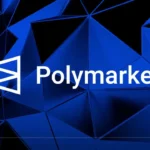

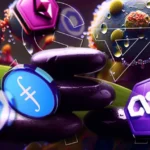


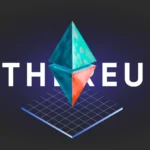

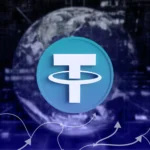
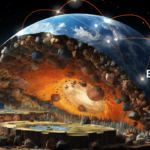

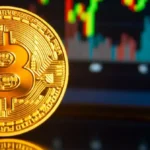



 Cryptol – your source for the latest news on cryptocurrencies, information technology, and decentralized solutions. Stay informed about the latest trends in the digital world.
Cryptol – your source for the latest news on cryptocurrencies, information technology, and decentralized solutions. Stay informed about the latest trends in the digital world.